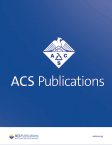Abstract PO4-28-08: Unraveling the Role of BRCA1-BARD1 E3 Ubiquitin Ligase in DNA Repair: A Promise for Enhanced Chemotherapy Outcomes
IF 2.9
Q2 PUBLIC, ENVIRONMENTAL & OCCUPATIONAL HEALTH
引用次数: 0
Abstract
BACKGROUND: BRCA1, a central player in gynecological cancers, collaborates with BARD1 to shape a potent complex pivotal for DNA binding and ubiquitin E3 ligase activities. This complex impacts a myriad of biological pathways. Notably, BRCA1-BARD1’s role in tumor suppression and homology-directed DNA repair (HDR) has been spotlighted. Our innovative approach used RING-domain mutations to craft ligase-dead BRCA1-BARD1 mutants, hypothesizing that these mutants would offer fresh insights into the DNA repair dynamics of BRCA1-BARD1. METHODS: Full length BRCA1-BARD1 or truncated mutants, and histones were purified from E. coli. or insect cells. Nucleosomes were assembled for in vitro ubiquitylation reaction and binding assays. Stable mammalian cell lines HeLa and MDA-MB-436 that express wild type or mutant forms of BRCA1 and BARD1 were established for a host of analyses, including cellular fractionation, foci analysis, Proximity ligation assay (PLA), comet assays and clonogenic survival assays with various DNA damage agents. RESULTS: By systematic biochemical screening and a series of in vitro assays, we generated a truly BRCA1-BARD1 E3 dead mutant, BRCA1I26A, L63A, K65A-BARD1 (BRCA1-E3d), which lacks E3 ligase activity but possesses all other known attributes such as retention of BRCA1-BARD1 heterodimeric structure formation, DNA binding, and intact RAD51-mediated recombinase activity. To our surprise, we discovered that previously described BRCA1-BARD1 RING-domain mutant (BRCA1-I26A) still possessed ubiquitylation activity not found in BRCA1-E3d. To determine the biological significance of these mutants, cells stably expressing BRCA1-E3d were treated with various DNA-damaging agents and shown to more sensitive than WT or previously identified mutants. DNA repair pathway reporter assays determined these cells were deficient in various repair pathways compared to their BRCA1-WT counterparts. Further studies demonstrate that BRCA1-BARD1 E3 ligase is required for DNA resection during HDR, as evidenced in reduced levels of DNA repair-related foci formation such as RPA, RAD51 and CtIP in BRCA1-E3d cells. Furthermore, compared to BRCA1-WT cells, BRCA1-E3d cells were more sensitive to DNA damage reagents after depletion of 53BP1, which indicates BRCA1-BARD1 E3 ligase function also contributes to later stages of DNA repair completion. CONCLUSIONS: Our work dispels prevailing ambiguities surrounding BRCA1-BARD1 E3 ligase functions, underscoring its paramountcy in genome repair. This trailblazing research not only enriches our understanding but also beckons therapeutic interventions targeting tumor suppression. The unveiling of BRCA1-BARD1 E3 ligase's intricate regulatory dynamics combined with our novel mutants paves the way for an exciting new era in cancer therapeutics, hinting at superior treatments to enhance patient recovery. Citation Format: Wenjing Li, Meiling Wang, Nozomi Tomimatsu, Jae-Hoon Ji, Salvador Alejo, Gangadhara R. Sareddy, Sandeep Burma, Rachel Klevit, Weixing Zhao. Unraveling the Role of BRCA1-BARD1 E3 Ubiquitin Ligase in DNA Repair: A Promise for Enhanced Chemotherapy Outcomes [abstract]. In: Proceedings of the 2023 San Antonio Breast Cancer Symposium; 2023 Dec 5-9; San Antonio, TX. Philadelphia (PA): AACR; Cancer Res 2024;84(9 Suppl):Abstract nr PO4-28-08.摘要 PO4-28-08:揭示 BRCA1-BARD1 E3 泛素连接酶在 DNA 修复中的作用:有望提高化疗效果
背景:BRCA1 是妇科癌症的核心参与者,它与 BARD1 合作形成了一个强大的复合物,对 DNA 结合和泛素 E3 连接酶活动至关重要。这一复合体影响着无数生物通路。值得注意的是,BRCA1-BARD1在肿瘤抑制和同源DNA定向修复(HDR)中的作用一直备受关注。我们的创新方法是利用 RING 域突变来制作连接酶死亡的 BRCA1-BARD1 突变体,并假设这些突变体将为 BRCA1-BARD1 的 DNA 修复动力学提供新的见解。方法:从大肠杆菌或昆虫细胞中纯化全长 BRCA1-BARD1 或截短突变体以及组蛋白。组装核小体,进行体外泛素化反应和结合试验。建立了表达野生型或突变型 BRCA1 和 BARD1 的稳定哺乳动物细胞系 HeLa 和 MDA-MB-436,用于一系列分析,包括细胞分馏、病灶分析、邻近连接试验(PLA)、彗星试验和使用各种 DNA 损伤剂的克隆生成存活试验。结果:通过系统的生化筛选和一系列体外实验,我们生成了一个真正的 BRCA1-BARD1 E3 死突变体 BRCA1I26A, L63A, K65A-BARD1(BRCA1-E3d),它缺乏 E3 连接酶活性,但具有所有其他已知特性,如保留 BRCA1-BARD1 异源二聚体结构的形成、DNA 结合和完整的 RAD51 介导的重组酶活性。我们惊讶地发现,以前描述过的 BRCA1-BARD1 RING-domain突变体(BRCA1-I26A)仍然具有 BRCA1-E3d 中没有的泛素化活性。为了确定这些突变体的生物学意义,用各种 DNA 损伤剂处理稳定表达 BRCA1-E3d 的细胞,结果显示这些突变体比 WT 或以前发现的突变体更敏感。DNA 修复通路报告检测确定,与 BRCA1-WT 细胞相比,这些细胞在各种修复通路上存在缺陷。进一步的研究证明,BRCA1-BARD1 E3连接酶是HDR过程中DNA切除所必需的,BRCA1-E3d细胞中DNA修复相关的病灶(如RPA、RAD51和CtIP)形成水平降低就是证明。此外,与 BRCA1-WT 细胞相比,BRCA1-E3d 细胞在缺失 53BP1 后对 DNA 损伤试剂更敏感,这表明 BRCA1-BARD1 E3 连接酶的功能也有助于 DNA 修复后期的完成。结论:我们的研究工作消除了目前围绕 BRCA1-BARD1 E3 连接酶功能的模糊认识,强调了它在基因组修复中的重要作用。这项开创性的研究不仅丰富了我们的认识,也为针对肿瘤抑制的治疗干预提供了可能。BRCA1-BARD1 E3连接酶错综复杂的调控动态的揭示与我们的新型突变体相结合,为癌症治疗领域一个激动人心的新时代铺平了道路,为促进患者康复的卓越治疗方法埋下了伏笔。引用格式:李文静、王美玲、富松之美、池在勋、萨尔瓦多-阿莱霍、Gangadhara R. Sareddy、Sandeep Burma、Rachel Klevit、赵伟星。揭示 BRCA1-BARD1 E3 泛素连接酶在 DNA 修复中的作用:有望提高化疗效果[摘要]。在:2023 年圣安东尼奥乳腺癌研讨会论文集;2023 年 12 月 5-9 日;德克萨斯州圣安东尼奥。费城(宾夕法尼亚州):AACR; Cancer Res 2024;84(9 Suppl):Abstract nr PO4-28-08。
本文章由计算机程序翻译,如有差异,请以英文原文为准。
求助全文
约1分钟内获得全文
求助全文
来源期刊

ACS Chemical Health & Safety
PUBLIC, ENVIRONMENTAL & OCCUPATIONAL HEALTH-
CiteScore
3.10
自引率
20.00%
发文量
63
期刊介绍:
The Journal of Chemical Health and Safety focuses on news, information, and ideas relating to issues and advances in chemical health and safety. The Journal of Chemical Health and Safety covers up-to-the minute, in-depth views of safety issues ranging from OSHA and EPA regulations to the safe handling of hazardous waste, from the latest innovations in effective chemical hygiene practices to the courts'' most recent rulings on safety-related lawsuits. The Journal of Chemical Health and Safety presents real-world information that health, safety and environmental professionals and others responsible for the safety of their workplaces can put to use right away, identifying potential and developing safety concerns before they do real harm.
 求助内容:
求助内容: 应助结果提醒方式:
应助结果提醒方式:


